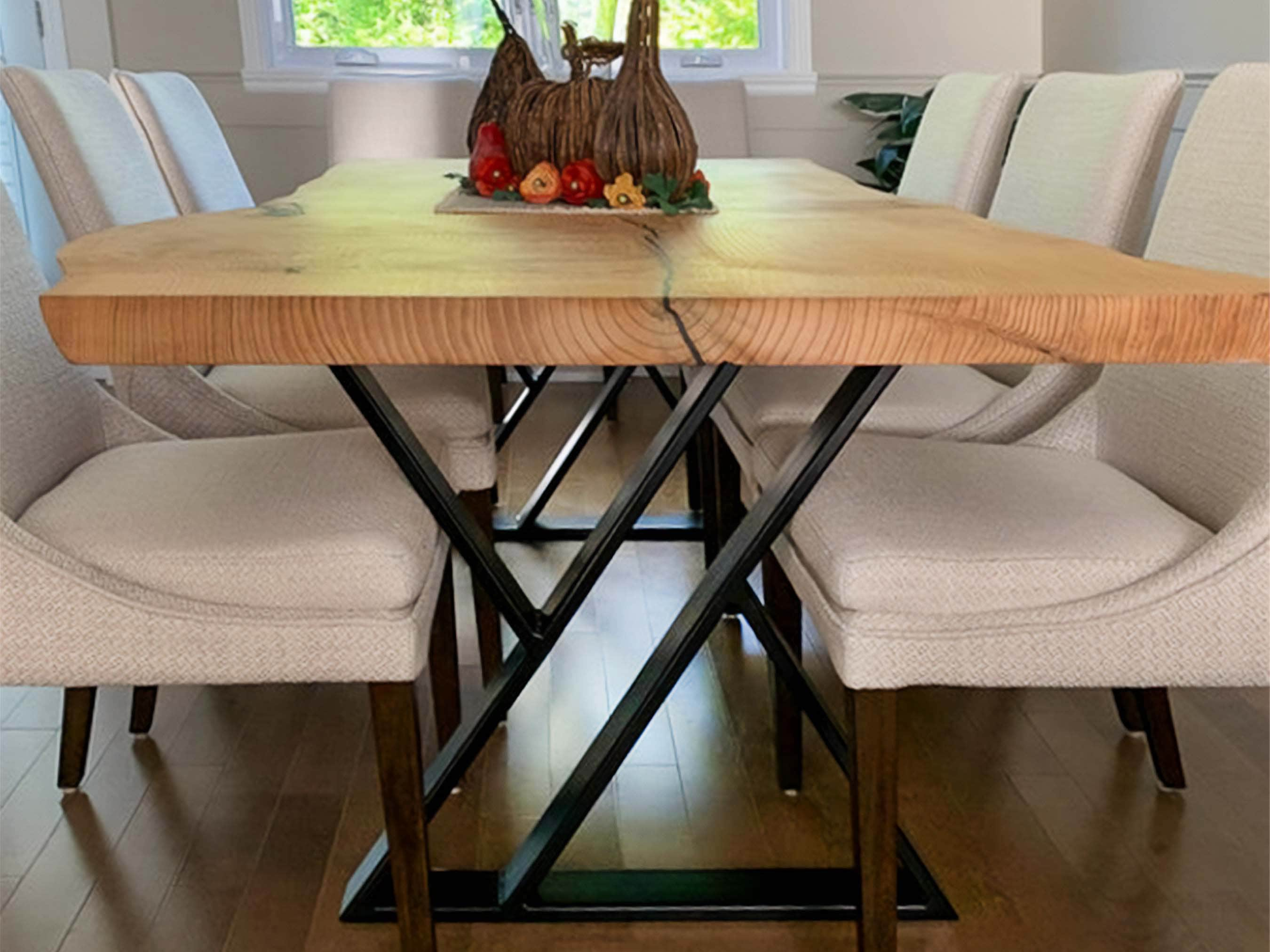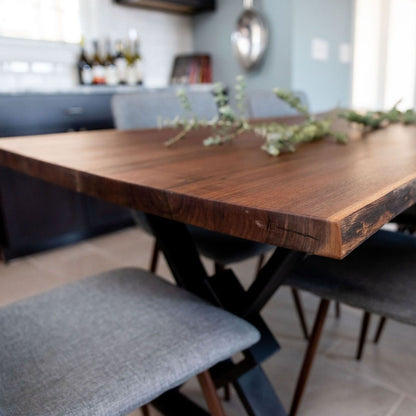From Standard to Modern: Find the Ideal Dining-room Table Legs for Your Design
While traditional styles such as cabriole and transformed legs stimulate a feeling of classic elegance, modern styles like barrette and geometric choices provide a chance for striking aesthetic rate of interest. As you take into consideration these components, the concern continues to be: exactly how can you effortlessly integrate these varied leg designs to develop a harmonious dining experience?
Recognizing Table Leg Styles
The selection of dining-room table leg styles can substantially affect both the looks and functionality of the area. Each leg design adds unique aesthetic aspects and practical functions, catering to varied style preferences and usage needs. Comprehending these styles is important for selecting the ideal table that aligns with your overall interior layout vision.
As an example, conical legs offer a tidy, classic look that can improve an area's beauty, while stand bases supply stability and make the most of legroom, making them ideal for smaller spaces. Barrette legs, a characteristic of mid-century contemporary layout, introduce an industrial flair, enabling an airy, open feel. Trestle legs evoke rustic beauty, providing robust assistance and a sense of timelessness.
Wooden legs can bring heat and appearance, whereas steel options often communicate a sleek, contemporary ambiance. Inevitably, comprehending table leg styles is vital for developing a natural eating area that shows individual design while ensuring usefulness and convenience.
Standard Table Leg Options
When picking dining room table legs, standard alternatives commonly symbolize classic elegance and craftsmanship. These designs reflect a rich heritage and a dedication to quality, making them excellent for those that appreciate classic visual appeals.
Among the most iconic typical leg designs is the cabriole leg, identified by its elegant bent form. This layout usually includes decorative makings and is most typically found in Queen Anne and Chippendale furniture. Another prominent alternative is the turned leg, which flaunts a collection of smooth, rounded forms that supply a classic look while preserving security.
In addition, the straight leg, while basic, offers a tough and unadorned framework that can mix flawlessly with a variety of tabletop styles. For those drawn to ornate detailing, claw-and-ball feet legs stimulate a sense of splendour and can serve as a sensational prime focus in any eating space.
Lastly, stand bases, although not strictly legs, give an alternative conventional choice that enables ample legroom and can be magnificently carved. Each of these conventional leg designs adds to the general setting of an eating room, marrying feature with visual charm.

Modern Table Leg Designs
Modern table leg designs provide a diverse variety of styles that highlight tidy lines and cutting-edge products. These layouts commonly focus on capability while acting as striking centerpieces within an eating area. Minimalist appearances are prevalent, with legs crafted from products such as steel, glass, and engineered wood, which contribute to a airy and modern feeling.
One popular layout is the hairpin leg, defined by its slim, tapered framework that gives security without overwhelming the table top (dining room table legs). This design is commonly discovered in mid-century modern-day furniture and can easily enhance different table forms. Another pattern is making use of geometric shapes, where legs might take on asymmetrical or angular kinds, including visual passion and a touch of artistry

Mixing Styles for Distinct Spaces
Typically, house owners seek to produce special eating spaces that show their personal design by blending various layout components. This technique enables the consolidation of varied aesthetics, read this post here resulting in a harmonious yet unique environment. For example, pairing a rustic wood table with streamlined, modern steel legs can create an eye-catching contrast that elevates the space's general charm.
Additionally, integrating vintage table legs with modern tabletops can evoke a sense of background while preserving a modern perceptiveness. Such combinations not just display specific taste yet additionally urge creativity, permitting home owners to curate a space that really feels both personal and inviting.
Color plays a crucial role in this blending procedure; selecting table legs that match or contrast with the existing color design can improve visual rate of interest. Whitewashed legs can soften the daring of a dark table surface, producing a balanced aesthetic.
Tips for Selecting the Right Legs
Choosing the right table legs is vital for attaining both performance and aesthetic appeal in your eating area. Begin by thinking about the total design of your room. Conventional settings profit from legs that include complex makings or turned styles, while contemporary rooms might require sleek, minimal designs.
Next, analyze the height and stability of the legs. dining room table legs. Basic eating tables vary between 28 to 30 inches in elevation, so make certain the legs enhance this dimension for convenience. Additionally, robust materials, such as hardwood or metal, can improve security and long life
Assess the leg form too-- choices consist of directly, tapered, or stand styles. Straight legs use a traditional look, while tapered legs can include a touch of style. Pedestal bases give enough legroom and are optimal for smaller sized areas.
Final Thought
In summary, selecting the ideal dining-room table legs calls for cautious factor to consider of both modern-day and standard styles. Conventional choices such as cabriole and transformed legs supply timeless elegance, while modern-day designs like barrette and geometric forms offer a contemporary touch. By integrating leg design, height, and product with the total decoration, a natural and inviting environment can be achieved. Eventually, the picked table legs must reflect the wanted aesthetic, improving the eating experience within the area.
The variety of dining area table leg designs can substantially influence both the appearances and capability of the room. Ultimately, comprehending more helpful hints table leg designs is crucial for developing a natural eating location that reflects personal style while ensuring practicality and comfort.One of the most iconic traditional leg styles is the cabriole leg, defined by its graceful rounded form. Straight legs use a traditional appearance, while conical legs can add a touch of elegance.In recap, choosing the ideal eating area table legs calls for careful consideration of both standard and modern styles.